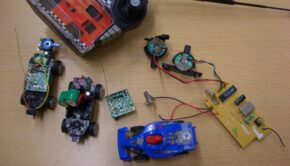Buying a Compact Battery for Heavy Duty Marine Performance
You should be very selective in buying a deep cycle battery for trolling motor on your boat. When you want to enjoy a bit of secluded time away from the shore, always be ready with the best safety precautions. In the marine wilderness, it is risky to be without a steady power source. Right from charging up the motor to keeping the lights burning on the deck, you cannot take any otherwise chances in the watery wilderness! Base your purchase on sufficient research about the technical aspects of the battery. These include the density, cycling capacity, electrolyte chemical, connection compatibility, and long-term maintenance. A powerful battery from Boat Gear Australia could last a standard boat needs for up to ten years. If your current one is getting into trouble, do not carry forward the risk and get yourself a reliable replacement fast.
Deep cycle differences
How are deep cycle products different from the conventional ones? Their running principle is same as any other battery. It would consist of a tough plastic casing (corrosion resistant) enclosing a power grid within an electrolytic solution. However, in these units, the lead plate is thicker and the electrolyte has a denser active material ratio. You can even find units using custom military-grade plates. It also sports a better discharge rate, marking up to 80% in repeated cycles for a prolonged time. Before you decide the best deep cycle battery, also check out the electrolyte chemical used. The AGM products are considered top of the rung above the wet or gel batteries. These are virtually maintenance free! Invest sufficient research into specs such as Ampere Hour Rating, Marine Crank Amps, and Reserve Capacity to decide on a suitable product.
Choosing one
You would need to depend on mathematical calculations to find the best suitable unit. Start with calculating the total power requirement of your vessel. The process used is, to begin with preparing an inventory of the equipment on a 12-volt amp draw. Consider all devices that need to be plugged on to the power source besides the motor, or the heart of your boat. Include the heating systems, air conditioning, refrigerator, music systems, TV, DVD, VCR, coffee machine, stoves, depth finders, fish finder, cell phones, GPS, computer, and all the lights. Once you have the total, multiply it with 20 and you would level the exact requirements of your boat approximately. Experts suggest that the real need should be considered at least 20% further over the above figure, just to be safe.
Visit a good professional website selling these units. It should be relevant to mention here that these products could be put to indoor use as well, especially for storing solar energy surplus. Many folks are shifting to off grid living eventually with solar power. You can even sell the surplus power to the utility grid and gather some neat free savings (as sun energy is free of cost). In addition, consider the ease of maintenance aspect in choosing the best deep cycle battery. Even the AGM maintenance free batteries would require periodic charging when your boat is on a standby. Otherwise, the chemicals of the electrolyte tend to settle and eventually corrode the battery faster than usual.
















